#miki reviews
Explore tagged Tumblr posts
Text
Just got my nijipuppets!
- Packaging looks nice, but you have to be careful not to cut the ears off of Mysta’s hat while doing so.


- Very detailed at a small scale with the exception of the legs. The shoes are mostly black and lack patterns. Due to how small the legs are, this isn’t really a dealbreaker, but it is still mildly disappointing.




-The grip at the bottom is soft and firm around the fingers. Some people may find it a bit too tight though.


-Interestingly enough, Mysta can sit on his own without any assistance! (because of the cape/jacket)

Rating: 9/10. Cute, well-made plushies with very minor flaws.
7 notes
·
View notes
Text
My Madoka Magica Thoughts
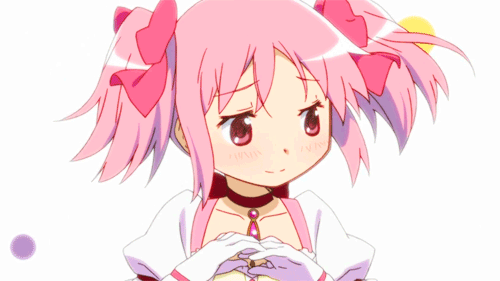
Back in May of this year I watched Madoka Magica for the first time with a group of friends, and while it was an enjoyable experience, I couldn’t quite say I liked it. While watching it, almost every character bugged me to no end, and when it was over, I was left with this odd gut feeling, almost like dissatisfaction.
Which made absolutely no sense to me: this should be right up my alley: magical girls with a dark twist? Yes, sign me up! So why didn’t it land for me? And was giving it a second chance going to do anything?
Apparently yes because a week ago I read the manga, and while I still don’t really like it, I did enjoy it more than I had before. So, here are some of my thoughts that I had while reading it.
Also major spoilers.
✨The first thing I noticed when reading the story is that this time around, I enjoyed the characters more, and I think this is because I had the context of their backstories to help me empathize with them. I know that part of the story’s point is to show a character who might be mean on the surface has their reasons for acting the way they do, but I honestly found most of the characters too bitchy or annoying to truly emphasize with them the first time around, even when their pasts were revealed. So this time, knowing that Homura has been traveling through time over and over again, or that Kyoko’s father killed her family, I was able to enjoy them more in the story than before (even if I still can’t fully say I like them) because I was able to apply this understanding of them earlier on than before.
✨I loved the theme of selflessness vs selfishness when making one’s wish, and how there can be consequences to both: while Kyoko regrets making the wish for her father, Mami regrets making the wish only for herself. No matter what, none of the wishes will be perfect and that’s the point. There’s a high cost in wishing for the impossible, and Kubey obviously knows this, since it’s what leads them to turn into witches.
✨Sayuka’s outburst at Madoka made more sense to me this time around. Madoka is sort of the angel on her shoulder so to speak, almost coming off as high and mighty (though not intentional) when she’s telling Sayuka what is good and isn’t while not being a magical girl herself. It can be frustrating when someone tells you how to do your job or live your life when they don’t carry those same responsibilities. Sayuka made a sacrifice in becoming a magical girl, and is figuring out how to navigate it. Madoka hasn't made that sacrifice, so from Sayuka’s pov she has no right to tell her what to do.
✨Homura is interesting because she does everything for Madoka’s sake: she’s sort of a mix of selflessness and selfishness. Because of her repeating time over and over again, she’s become a person who no longer understands the emotions of those around her, not even Madoka and her kindness.
Anyway, that’s most of my thoughts. Even though they’re all positive enough, overall, I can’t bring myself to enjoy the show or the manga. Something just doesn’t sit with me and when I’m reading or watching, I like bits and pieces, but not the entire picture, and I still haven’t been able to put a finger on why. I just don’t like it I suppose.
#wri's post#wrireads#my post#madoka kaname#madoka magica#puella magi madoka magica#homura akemi#sayaka miki#kyoko sakura#manga#anime and manga#book review#manga review#manga reader
16 notes
·
View notes
Text
𝐏𝐮𝐞𝐥𝐥𝐚 𝐌𝐚𝐠𝐢 𝐌𝐚𝐝𝐨𝐤𝐚 𝐌𝐚𝐠𝐢𝐜𝐚 𝐑𝐞𝐯𝐢𝐞𝐰! 🎀 🍓
"Puella Magi Madoka Magica", or "Madoka Magica", is a magical girl series released in Japan in 2011. Written by Gen Urobuchi the "Puella Magi Madoka Magica" manga was released in Japan in three volumes also in 2011. With a total of 12 episodes the lore of this show goes surprisingly deep. Be careful though, because behind the cutesy art style lies the hidden dark world of magical girls.

𝑨𝒏𝒊𝒎𝒆 𝑺𝒚𝒏𝒐𝒑𝒔𝒊𝒔 - - - - - - - - - - - - - - - - 🎀
The story of "Madoka Magica" follows Madoka Kaname and her best friend Sayaka Miki, two seemingly ordinary middle school girls. One day they both save a mystical creature known as a Kyubey from one of their classmates, Homura Akemi. Upon meeting Kyubey he offers them the chance to become magical girls, gaining powerful abilities in exchange for fighting witches— evil beings that threaten the world. As Madoka considers this offer, Sayaka accepts. Then together, along with their new mentor Mami Tomoe, learn about the struggles of other magical girls and the grim consequences that come with it.

𝑾𝒉𝒚 𝒀𝒐𝒖 𝑺𝒉𝒐𝒖𝒍𝒅 𝑾𝒂𝒕𝒄𝒉 - - - - - - - - - - - 🎀
"Madoka Magica" is an interesting watch. If you love the magical girl genre but wish it went deeper then this is the show for you! It's similar to "Sailor Moon" in the way that both series are magical girl anime that discuss more serious topics. The series delves into themes of hope, sacrifice, and the often harsh realities of dreams, revealing the dark twists behind what seems like a typical magical girl story. Not only is the animation stunning but the soundtrack has a way of fully immersing you in what's happening on screen. Almost every character you see on screen is fully fleshed out and has an intreaging backstory. Overall the anime is very well thought out with amazing animation and an beautiful soundtrack to match, it's no wonder it got so popular!

𝑴𝒚 𝑶𝒑𝒊𝒏𝒊𝒐𝒏/𝑹𝒂𝒕𝒊𝒏𝒈 - - - - - - - - - - - - - 🎀
Overall I'd give this anime a solid 9/10. I loved the spin on the magical girl trope and the fleshed out characters. I found myself intreged throughout the entire show sucked in by the interesting storyline and sensational soundtrack. I found myself with a few questions that were not answered but it was nothing so substantial that I couldn't understand the plot.

𝑾𝒉𝒆𝒓𝒆 𝑻𝒐 𝑾𝒂𝒕𝒄𝒉 - - - - - - - - - - - - - - - 🎀
This show is available to watch on many different platforms. Disney Plus, Hulu, Crunchy Roll, and Prime Video.
#puella magi madoka magica#madoka magica#pmmm madoka#madoka kaname#homura akemi#mami tomoe#sakura kyoko#sayaka miki#2010s anime#2010s manga#2010s#anime review#anime recommendation#cute#kawaii#magical girl#magical girl anime
13 notes
·
View notes
Text
A Terrified Teacher At Ghoul School Episode 6 Review - Craziest Sports Day
Hands down, the craziest sports day I’ve seen in an anime so far. Maybe it’s because these guys are youkai that makes it so crazy because they’re all using their abilities which wouldn’t be allowed in a normal setting. Also, this is the first two-parter for the show.

As someone who read the manga, there are a few changes this episode made. First off, the sports day had a chapter called Prep Time where the class was preparing for the event. This is the part that had Maizuka rolling on a stone with Haruaki, Sano and Kurahashi chasing after him. This is also the episode where Kurahashi was formally introduced. However, I do get why it was cut out as the Sports Day is the main highlight and that the prep time chapter ends with four characters getting stuck in the mountains and how they got back was never explained. It would be weird to just transition from there to the Sports Festival without explanation.



Another change is Kurahashi predicting Haruaki would be wearing a red fundoshi as punishment. In the manga, he predicts Haruaki would be wearing a blazer uniform, which he hates. However, the anime made it so that Haruaki likes all sorts of female uniforms when he’s just a sailor uniform fanatic in the manga. The principal just suggested the red underwear just for shit and giggles. Speaking of Kurahashi, his hair is colored as orange in the anime but he’s blond in the manga.

The last of the major changes in the anime is Hatanaka yelling at the principal about potentially cutting his salary. He yelled that he has three kids. In the manga, he actually yells that he has a fourth on the way, but that was revealed in some chapters before the event. It is still canon that he has three kids. If you’re an anime-only, I hope you anticipate Hatanaka and his family because they’re absolutely hilarious but also adorable.

Anyways, other than that, the rest of the episode is about the Sports Festival and it’s the same as the manga! However, without worrying too much about manga and anime comparisons, I can safely say that the anime amps up the manga content due to motion and voice acting.

My favorite parts were buff Maizuka and Hijita’s misfortunes. I feel like Hijita gets the short end of the stick at times when it comes to the gags. The author loves making him as miserable as Haruaki at times. During the scavenger hunt, he got a prompt saying “A classmate you secretly hate”. I like the detail that Hijita likes all of his classmates and that he couldn’t bear to be hated by any of them. However, he took the crumpled paper Maizuka had and also took Sano, thinking it was Maizuka’s best friend paper. Little did he know, he was able to get out of being hated by his classmates…by accidentally revealing he has a ‘secret crush’ on Sano to which he rejects. Haha! At least you won, Hijita…but at what cost? Also, shoutout to Taito Ban because he makes Hijita even more hilarious!











The horse racing part was hilarious too because that’s when everyone uses their abilities to go wild. Apparently, Haruaki was the one who came up with the strategies, so even if he can be a dunce and a wimp, Haruaki is smarter than you expect.





There were some youkai students that were prominently featured in this episode. The first is the bespectacled Kurahashi, who is a Kudan youkai who can predict upcoming misfortunes upon someone. However, when he does make his predictions, he makes a hilarious face and horns also sprout out. Next is merman Maeda. I like that instead of a female, the merfolk in this story is male. From other classes, we have Kashima who is not a deer youkai but an oni. He’s more prominently featured in the spinoff prequel manga that takes place a year before the story. Long story short, he’s a childhood friend of Hijita and Zashiki’s.


I think having Marshmallow being a commentator was genius. He is adorable as heck, so the commentary becomes cute. Even Mouse-sensei notices an innate talent in commentary. I can’t wait to see how this arc will conclude next week. Who do you think will win or lose?

#a terrified teacher at ghoul school#youkai gakkou no sensei hajimemashita#yohaji#Haruaki abe#Mikoto sano#mamekichi maizuka#yuta kurahashi#Kotaro hjiita#maeda#marshmallow#Izuna Hatanaka#Rintaro Miki#school principal#ryouta kashima#review#anime#anime review#ecargmura#arum journal
13 notes
·
View notes
Text
What makes Itazura na Kiss: Love in Tokyo so special?
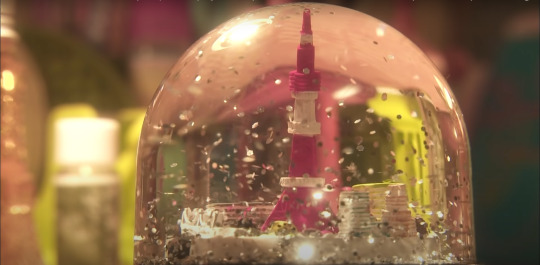
This is probably my twelfth thousand re-watch of this drama, but this is not like all the other rewatches. I have decided to make this one special by using it to analyse the drama in more depth, and attempt to uncover why I love it as much as I do, despite all it’s flaws. I am writing this as I watch the episodes, so it might be considered somewhat of a commentary.
Season 01 Episode 01

Starting off with the first episode, the opening scene is fantastic in my opinion. I love how we are getting introduced to Kotoko in the comfort of her own room, and getting a peek into her hearts deepest wish. I honestly think that this might be what made me like this version of Kotoko from the get go.
However, technically, the actual first scene of the story is the iconic confession scene (if you would even call it that). I am going to go on a tangent here and just say that I am an absolute fan of her letter, but I will get back to that in a later episode.
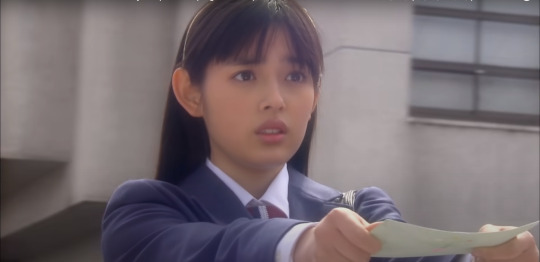
The way she is nervous and excited before confessing and the way he flat out rejects her before she even has the chance to confess always makes me feel crushed for her, and is the reason why I initially disliked him. But now that I am actually analysing it, it is less harsh than how I’ve always perceived it (or this might just be me trying to explain it away).
Hear me out, consider the implication that he has a whole queue of girls that like him, drool over him and confess to him in school, his reaction/rejection is really not that surprising. Imagine receiving confessions from a bunch of girls, when you just want to live your life in peace … that must get old and tiresome fairly quickly. Additionally, the fact that the whole entire school is talking about the rejection might explain why he didn't accept her letter; had he accepted it (even if he rejected her afterwards), the whole school would probably assume that they were dating. On the other hand it makes me think, why would the whole school be interested in someone confessing? are we back in kindergarten?
We see later on that she still has that card with her. I think that for her, getting rid of it would feel like getting rid of her feelings for him, which is why she holds on to it.
Anyways, I find it quite ironic when Kotoko’s friends tell her “you and Irie are from different worlds” . Their worlds are literally going to forcibly merge under one roof very very soon.

Another random thought I got, like a lot of my thoughts are, was why did Kotoko like Naoki, and not like Kinnouske? I mean he might not be handsome, he might not be smart, he might not be rich, but he is hardworking, talented and most importantly, he liked Kotoko, and was always nice towards her. This version’s Kinnouske has always been my favourite one. I think this version does a good job at portraying him as a three dimensional person, rather than a comic relief kind of personality *cough* Itazura Na Kiss 1996 *cough*.
When I started to pay more attention, I realised that although I do love Kinnouske, I do find him to often do things based on his own feelings, and does not consider what Kotoko wants. For example, I cant help but feel that he is a bit insensitive for being happy when Kotoko is sad after deciding to ‘give up’ on Naoki. This is a small detail, and perhaps I am reading too much into it, but I do feel that Itazura Na Kiss is all about the details. He sort of redeems himself for it by asking his friends to come and help her move, but soon it goes to shit again, which I will come to later on.
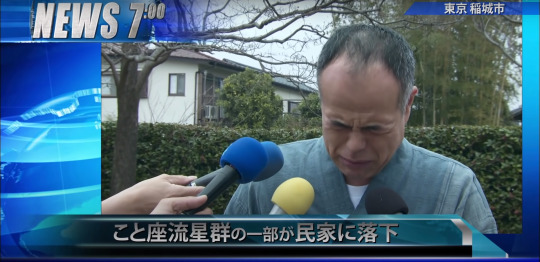
I really like — at this point, everything really, but anyways — the reoccurring mentioning of “less possible than getting hit by a shooting star”, which is a kind of teaser to what is to come later on in the show. Although I’ve always thought that the reason for their house being destroyed in this version to be a bit dumb, I admit, I do like the thought and metaphor behind it, so I will turn I blind eye to it. I also find it hilarious how it ended up all over the news.
Kotoko’s extremely optimistic outlook despite everything that happened is perhaps her most charming personality trait. It makes me feel that her optimism is somehow what everything work out for her in the end.
Now, to one of the scenes I dislike most in this story. I am always tempted to skip the first episode altogether to avoid it. And that’s the scene where Kinnouske is collecting donations for Kotoko. Here we see Kin-chan’s good intentions having not so good results. I get the feeling that he does what he thinks is helpful for her, and never once stops to consider her feelings or ask her opinion on it, and the way she gets annoyed with him tells me that she’s not that fond of this either, despite what his intentions were.
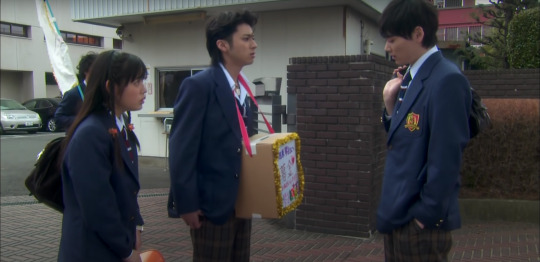
Back to Naoki. Looking at the size of that entrance, he could have 100% just walked around Kotoko and Kinnouske and gone in. Heck, following the little pattern we have so far, wouldn’t he purposefully avoid them to maintain a quiet and peaceful life? Now, he did just the contrary and approached them. Considering the fact that by the end of the episode he already knows about the arrangement (of her going to his home to stay there with her father), it would be safe to assume that at this moment in time, he already knows that she would stay in his house. This is supported by his response to her “preferring to die over taking his money”; “are you sure you want to tell me that?”. Therefore I assume that he approaches her out of curiosity.
If you pay close attention to this interaction, you will notice that Naoki did not say one thing that was wrong or out of line. Naoki giving Kotoko the money was not very nice. But more than anything, it was quite confusing. He told her “If I donate this money, you won’t argue with me anymore”. Now, Kinnouske was the one arguing with Naoki, so why would Naoki tell Kotoko that? Is it because he sees her as the most reasonable one, or rather, is it because they’re ‘her’ friends (thus making her responsible for them)?
Kotoko was the one with an explosive reaction in this situation [although she was in the wrong, I like how she stood by her friend eventhough they were fighting a few moments ago (if she realised the previously mentioned point that is).], and was more than a bit mean when saying “do you even have friends?”. Here we see just how much of an opposite to her he is. Instead of having an explosive reaction like Kotoko had, Naoki just finds her reaction amusing and leaves calmly.

Now to when she goes with her father to the Irie household. Naoki’s mother’s (Noriko’s) comment of “you and I seem like we were meant to meet” and the fact that she knows that she’s in the same school as Naoki tells me that he told her about Kotoko; which in turn makes me think that she left a memorable impression on him. Kotoko’s reaction to seeing Naoki is Hilarious, especially te part where she’s too shocked, and is not shy to say “I’m just do surprised … because Iri-chan-san and Irie-kun don’t look alike at all” (I really am starting to realise and understand why Naoki finds her amusing).
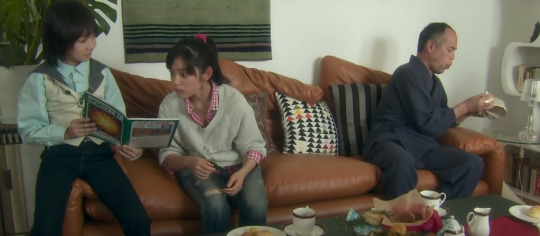
Another one of those small details; the way her father scoots away right off the bat when he saw Yuki asking her a question about a kanji character, and pretending to look at a random décor piece kills me (It’s nice to keep in mind; despite how similar Kotoko might sometimes be to her dad, he still has more awareness of his own ‘stupidness’ than her).
I recently watched one of @Machitsuki2 ‘s analysis videos, and like she pointed out, I did in fact notice how Kotoko was going straight to the food and cakes, while Naoki was mainly only sipping coffee (even during breakfast). This will become really important later on.

Lastly, I love the interaction between Noriko and Kotoko when she takes her up to show her her room; Kotoko found a mother she never had, and Noriko found the daughter she never had. They are the first puzzle pieces that fit into each other perfectly.
When Naoki comes in and tells Kotoko that she took Yuki’s room, I get the feeling that rather than an insult it served to make Kotoko understand why Yuki disliked her so much. I might be a bit delulu, but I kind of feel that Naoki did this on purpose? anyone?
When Noriko asks Kotoko “do you like(suki) Sukiyaki?” and Kotoko looks at her (in Naoki’s direction) and confidently answers “I like it! (suki-desu!)” almost feels directed at Naoki. It is in fact the first time he hears her say it. This next part I had to go back and watch once more; Naoki only starts being mean to her when she pulled the bag from him (not wanting his help) and he saw the letter she wrote him drop out of it. I do wonder if he is mean to her because of that letter, or maybe because he thought she was rude towards him?
To be continued…(maybe)
#itazura na kiss#itazura na kiss love in tokyo#aihara kotoko#miki honoka#irie naoki#yuki furukawa#Ikezawa kinnouske#yuki yamada#character analysis#story analysis#drama#jdrama#japan#s01e01#episode 1#recap#review
48 notes
·
View notes
Note
LUCIEN DID YOU FINISH PARALIVE??? did you like it tell me your thoughts !!!!
miki!!!! nothing could've prepared me for that trip I know you warned me but nothing could've prepared me!!!!! i thought this is gonna be a silly music centered anime but it got messed up SO QUICKLY and you know how much I feed on that meal 😭✌
I absolutely loved the intense atmosphere and the dark twists added to the whole picture. the character designs are AMAZING and so so unique yet without feeling unnatural or out of place in their area of what they are doing and presenting, so were the artistic choices and the animation in general. ngl the choice of music and the way it was presented surprisingly really got me hooked enough to add a bunch of their songs into my playlists!! I legit loved the concept of "yeah these stage visuals are cool and all but they come at the cost of your mental health :)" that's actually SO intriguing and it tickled my brain really well.
I probably ended up loving TCW as a group the most, the two tired dads adopting traumatized kids dynamic honestly hit the spot for me. ✌ but I really did end up loving them all. there is surprisingly not a single character among the main groups I ended up not quite liking. my favorite is definitely kanata.... </3 he just checked all the boxes for me. my main gripe though is that there was so little of anne, compared to how much screentime other characters were given. sometimes anne felt so out of place with how little they actually got to have a say in anything. they should've been MORE of them honestly.
also that whole nayuta/shiki storyline had me on edge gripping my seat losing my mind everytime they added more questions to the whole ordeal. 😭✊ that part was the wildest trip I've had in a while and i loved every second of it. the whole kanata/allen dynamic also has me in it's clutches 😔✊both allen's and anne's trauma also really hit home for me ah :')
all in all I loved it miki!!!!! and I shall be forever grateful you dragged me down that road 💜✊✊✊
#not really an in depth review or anything i just enjoyed it lots <3#I had such a good time with it!!!! all thanks to you miki!!!!!!
8 notes
·
View notes
Text
Ring (1998)

I enjoy comparing original films to their remakes. 90% of the time, the original proves itself the superior film but seeing the same story done by a different set of hands is exciting. In theory, the remake is an opportunity to polish away the blemishes, set up the sequel(s) no one knew was coming, give the standout character more time to shine, etc. I saw 2002’s The Ring by Gore Verbinski before Ring (also known as Ringu), so this was an interesting experiment. This horror film starts with a great premise. This 1998 film is scary and takes some unexpected turns, culminating in a terrific ending. You can immediately see why it was remade by Hollywood four years later - but is it the superior movie? After her niece’s mysterious death, journalist Reiko Askawa (Nanako Matsushima) investigates an urban legend about a videotape that supposedly kills anyone who watches it. First, you get a phone call, then, one week later, you die. Thinking nothing of it, Reiko watches the tape. After receiving the ominous phone call, she reaches out to her ex-husband, Ryūji (Hiroyuki Sanada). They search for the video's origins, hoping it can save Reiko from the vengeful spirit it unleashes. One of the film’s big strengths is the killer recording. Before the tape, you see the curse's end results: the victims and their twisted faces. You're curious, so you watch along with Reiko. At that point, your heart sinks. It’s a series of black-and-white, disjointed scenes that concludes with a shot of a well and a screeching sound. "Weird" is an understatement. Where do you even start? Keep in mind, Reiko had to track down the tape in some cabin where its victims stayed a week ago and everyone who’s already seen it is dead. Making things even more dire is that she catches her young son (Rikiya Ōtaka) watching the video one night. Now, if she fails to decrypt this mystery, he'll die too. The thing with horror films like this is that you want to see what happens, but your instinct tells you to run away. The "danger" is engaging, which makes Ringu a fun enigma. You could ever solve where it came from yourself but you're eager to find answers. Like Reiko and Ryūji, you’re scrutinizing every frame of that tape. Are the contents metaphorical? Is it real footage? Could the people we see be real, but the images be fake? The unique thing about Ringu is that while each clue might bring us closer to the finish line, it doesn’t feel like it’s getting any easier. The more clues we gather, the spookier things become. You know what’s happening is fiction, but there’s a small part of you that can’t help thinking you shouldn’t be watching. If you suddenly received a phone call midway, you'd jump out of your skin.
The biggest difference between Ringu and The Ring is the curse's rules. In some ways, it’s clever. In other ways, it feels like a bit of a cheat. Without revealing too much, the key to solving the mystery in Ringu depends heavily on Ryūji’s psychic visions. With no supernatural abilities, it would be impossible to figure everything out so Reiko’s niece and her friends never had a chance. In a way, that explains why the thing is an urban legend. You only get the phone call under certain circumstances and receiving the phone call doesn't mean you get those much-needed visions - only psychics get those. This means most people would watch the video, go “Well, that was weird” and then die a week later for reasons no one could figure out. The tape is so obscure it would take a long time to make the connection. That makes it feel like a "real" urban legend. The downside is that it makes the scenario feel a tad convoluted. We're asked to believe in 1) cursed videotapes, 2) ghosts and 3) psychic powers. While these do come together during the conclusion, it’s still removed from reality by one more level than the Gore Verbinski film. It also feels much more Japanese than the American version, which is neither a good nor a bad thing, but worth mentioning. This might be controversial, but I like the simplified horror of the American remake better.
I say 2002’s The Ring is an improvement over the original for several reasons, the biggest of which being that the story feels much more universal and its mechanics are less complicated. Don't let that discourage you from viewing Ringu. It’s a more subdued, stranger-feeling horror movie that’s steeped in Japanese culture. It’s also scary and memorable, with a great premise and scares that will stick with you. (Original Japanese version with English subtitles, June 7, 2023)

#Ring#movies#films#movie reviews#film reviews#Ringu#The Ring#Hideo Nakata#Hiroshi Takahashi#Koji Suzuki#Nanako Matsushima#Hiroyuki Otaka#Miki Nakatani#Yuko Takeuchi#Hitomi Sato#Yutaka Matsushige#1998 movies#1998 films
5 notes
·
View notes
Text
Yesterday, I went back in time to experience one of the darkest chapters of our national history, the sadistic, mafia-filled 90s by watching Miki (2024). It is one of those movies that makes you stare at the screen in disbelief long after the movie ended. You think about it as you go home from the cinema, you keep thinking about it the next day, and the day after. It opens your eyes with its brutality. It opens your eyes to the brutal legacy of our own country.
I look back at what Milan Ondrík (the actor who plays Černák) said about the movie in a recent interview: "First of all, it is not a movie about Černák, it is a movie about the dark history of our country, and we have created it so we [Slovaks] can learn from our mistakes." I have to agree. When you watch the movie (and even when you learn a little about the period), you realise that Mikuláš Černák and other Slovak mafia bosses of that period were really just figures on a large chessboard, the tip of the iceberg. They were usually guys from working-class backgrounds, the underdogs. Bus drivers, boxers, ex-cons, fruit sellers. They learnt how to adjust to the chaos of the era, saw an opportunity to make money quickly and seized it, not giving a damn about the destruction they were leaving behind.
And what they did was monstrous, but then you look at the "protectors of justice" who allowed them to carry on, the lawyers who prepared dubious contracts in their names, the judges who helped them get away with their heinous crimes, the investigators and policemen who covered up after them for a bit of money stashed in an envelope. The politicians who often used the mafia to do the dirty job for them. The mafia thrived because the environment not only allowed them to but even actively encouraged them to continue. These gansters used an opportunity that was presented to them on a silver platter.
I think the mafia never really disappeared. The "criminal forefathers" killed each other in open gun fights in front of blocks of flats, and their successors learned from their mistakes, moved to the shadows instead, and became much more sophisticated. And when you look at the recent changes in the Slovak legislation, all the reduction of penalties for criminal activity, who is to say that there won't be new Černáks, new Sýkoras, new Piťos again? New guys seeking new opportunities to seize, just because the system is once again giving them a helping hand.
So. Go. See Miki if you can (and if you have the stomach to take it, the movie is 18+ for a reason). Watch the movie they have created so we can learn from our mistakes.
---
For those of you who are not familiar with our underworld, the movie tells the story of Mikuláš Černák, one of the most notorious mafia bosses in Slovakia. Slovakia went through a turbulent and dangerous time in the 1990s which was a period marked by a sharp increase in organised crime in the midst of political and economic upheaval. The mafia had an impact on many facets of life. After Communism collapsed in 1989 and Czechoslovakia was dissolved in 1993, Slovakia quickly moved from a centrally planned to a market economy. Emerging mafia groups took advantage of the political vacuum and economic turmoil produced by this change. Because of the abrupt change in political institutions, the legal system and law enforcement were unprepared to deal with the emergence of organised crime. Mafia organisations were able to operate with impunity because of the police's underfunding, inadequate training, and massive corruption. This helped mafia spread their influence throughout a number of industries, including nightlife, politics, and the construction sector.
#ťumbľr#miki#miki 2024#mikuláš černák#milan ondrík#jakub kroner#film review? social observation? both?#writing this in english on purpose so that moots from other countries can read this as well
4 notes
·
View notes
Text
BOOKS OF 2022
Yes, you read correctly. I'm a ninny and forgot to post this last year so I'm posting it now so I can get all caught up. (2023's list is coming soon)
I got books on Inside No. 9 and Blake’s 7 (two of my favourite TV shows) plus a book about Alice in Wonderland (inspired by the V & A exhibition) and one about how Disney was inspired by rococo art (based on the exhibition that I think was held at the Wellcome but I could be wrong).
Also read Laurence Llewelyn-Bowen’s book, More More More which examined the art of maximalist interiors and Runway Bird by Irina Lazareanu which was sort of a style guide to being a rockstar’s girlfriend. I read Growing Up. Sex in the Sixties which looked at sex in society/popular culture at this time and Hood Feminism by Mikki Kendall. I read Zoe Howe’s guide to witchcraft, Witchful Thinking plus Lisa Kroger + Melanie R. Anderson’s 2nd book, Toil and Trouble, which looks at notable women in the occult in America. Plus Dress Code by Veronique Hyland
Also managed to bag a copy of the book of Velour (the drag magazine) when I went to see Sasha Velour perform. I read And the Category Is by Ricky Tucker which examines the ballroom drag culture + voguing plus How You Get Famous by Nicole Pasulka which looked at the rise of some of the drag queens from the Brooklyn scene + the impact of Drag Race.
Read The Queer Bible which has various LGBT+ celebrities talking about the different people who inspired them and a couple of books which looked at the rise of lesbian popular culture in the early 2000s – The 2000s Made Me Gay by Grace Perry and Girls Can Kiss Now by Jill Gujowitz.
I don’t tend to read that many novels but I did read some really good ones this year – My Year of Rest and Relaxation, Yinka Where’s Your Husband? How to Kill Your Family and The Albion Initiative (the final part of the Newbury & Hobbes series of steampunk detective novels with an occult twist). And I finally managed to get round to reading Shuggie Bain (which I loved) as well as tracking down copies of The Elementals (Southern Gothic horror novel) and Interfictions (which contains the story about Nancy Spungen called Rats).
I read memoirs by Joan Collins + Esme Young (from Great British Sewing Bee) as well as an excellent biography on Jayne Mansfield called The Girl Couldn’t Help It and an oral history about Antony Bourdain called Bourdain.
I do tend to read a lot of music books. I read memoirs by Kid Congo Powers and Miki Berenyi plus Bodies by Ian Winwood (which looked at how the music industry affects mental health mixed in with his own story) and Exit Stage Left by Nick Duerden (which looked at what happened to a variety of stars after their fame dwindled). Also read Southend on Zine by Graham Burnett which was a history of fanzines in the Southend area which included interviews with a lot of the zine makers + touched on the history of alternative music/culture in the area.
One of my favourite books this year was Millenium Gothic by Dorian Bridges (known as of herbs and altars on YouTube) which deals with her growing up as a goth in the 00s but also deals with her mental health issues including anorexia and self harm. Another couple of favourite authors returned with second memoirs, Emma Forrest with Busy Being Free and Amy Liptrot with The Instant. Also Ione Gamble (who does the Polyester website + zine) wrote a brilliant book of essays called Poor Little Sick Girls which I highly recommend.
#book review#book reviews#my reviews#end of year#joan collins#esme young#jayne mansfield#anthony bourdain#kid congo powers#miki berenyi#fanzines#emma forrest#amy liptrot#ione gamble#polyester zine#sasha velour#rupaul's drag race#inside no. 9#blake's 7#alice in wonderland
2 notes
·
View notes
Text

I made an art recap template, have fun
#my art#mikidrawsstuff#artblr#original art#miki the maker#art recap#art meme#template#free template#year in review#art year in review#2023#2023 recap#artist on tumblr#artistsupport#digital artist#queer artist#artist resources
3 notes
·
View notes
Text
Shy Volume 2: From The Heart

A follow-up to a compelling first volume, but not without its growing pains, Shy vol. 2 continues to establish the role and nature of heroes, while exploring where the story will direct itself. As a piece of superhero media, does it do enough to separate itself from its peers and the genre at large?
Wow, I really must love asking myself heavy and complex questions or something, I should give myself a few gimmes sometime. Anyways, yeah, it's not clear cut in the slightest. But I think the easiest way to explain it is that it's a great superhero story when it's not doing typical superhero stuff. Not that the climaxes and action aren't good, but that its exploration of superheroes as people is far more compelling and enjoyable. But I'll get back to that thought later.
So let me start from the start. We get to see Stardust vs Shy, and I think within the context of the fight it's very well done. I like that Stardust is incredibly harsh on Shy, and that Shy responds to it well. But my major complaint is the flashback and characterization of Stardust. Flashbacks to establish a character feel low effort to me, and in the context of how Stardust behaves they're already peeling back his character, which I'm not a fan of. He doesn't need to be explored in the second volume. Let him be cold, let him be violent and almost sort of broody. We as readers don't need the life story of a character to establish any sort of understand or appreciation of their nature. Nor do we need the inner monologues of everyone aside from the main character. Anyways, mild rant over, Bukimi's art is very much something that leans into "impact" and "flare" before choreography, so it's easy to follow and produces some really nice panels and spreads.

Anyways, moving on to the best parts of the volume: the non-hero stuff. Getting to see Lady Black outside of her hero getup and interacting with Teru as a normal girl was very nice. They continue to really establish the depths of what makes someone a hero, as both girls accompany an old woman on a trip up a nearby mountain so that she can reminisce about her deceased husband. They dig deep into not just what makes someone a hero, but what makes them a person. Overcoming adversity, finding ways to succeed and help others, to sympathize with and encourage them.
In addition to that, we get to learn more about Lady Black's backstory, and find out that she's an amputee. It's a very simple and straightforward conversation that comes from the heart, and is executed really well. It's not touted as something heavy or emotional, but it is expressed that Lady Black's opening up her heart in the interaction. A very lovely piece that's great to see in media like this.
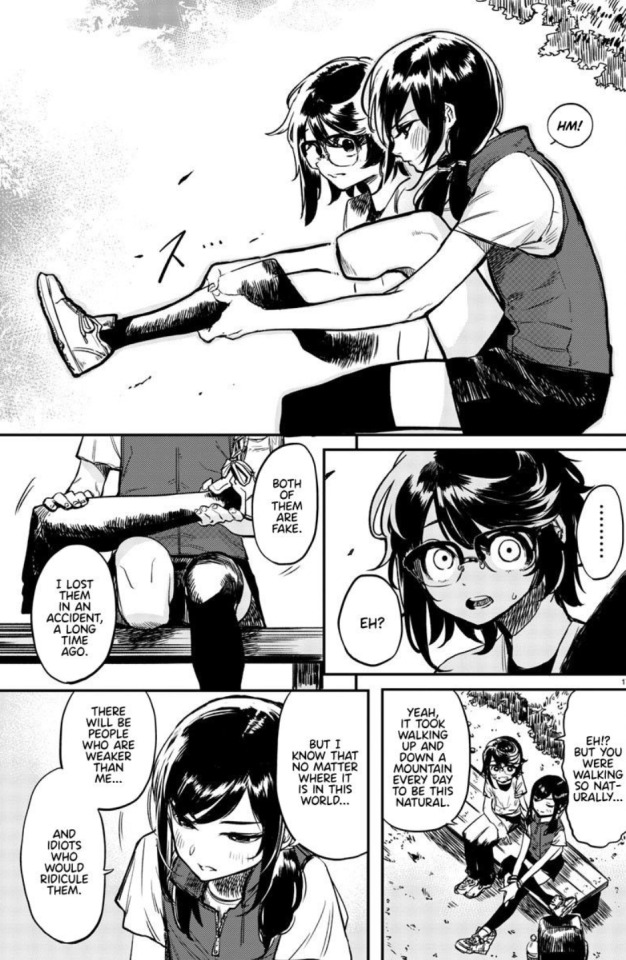
And here's where I take it off the rails a little bit. There's a lot of great stuff of similar nature in this volume. I really like it, but I'd also say it's rushing a little bit to establish the "purpose" of it. In short, there's a specific type of criteria expressed with each person that's become a hero. In order to become one, you have to have overcome something from your past. Something that has hurt you, left you feeling alone in the world, like nobody will save you. Only then, when you understand that there are other people out there that feel like that can you become a hero. It's a tenet of what the first volume expresses but with a more impactful sentiment.
Stardust, Lady Black, Spirit, Mian Long. All of these characters express adversity, ridicule, something that places them in the shadows of life. It's corny, and it fully fits the manga, but it's only when someone knows of darkness that they can spread light.
Alright, I've said my piece there, so last little thing in the same vein. The idea of gender norms is brought up in this volume, and it's a cute/fun expression of it, but I couldn't help but chuckle a little bit of what they made of it. Maybe because I see it as something inherently normal, but I felt that how Shy was shown to express the sentiment felt a little excessive for it. I think a one-two punch would have been better, where the dialogue came before a starry-eyed view of Shy as a hero.
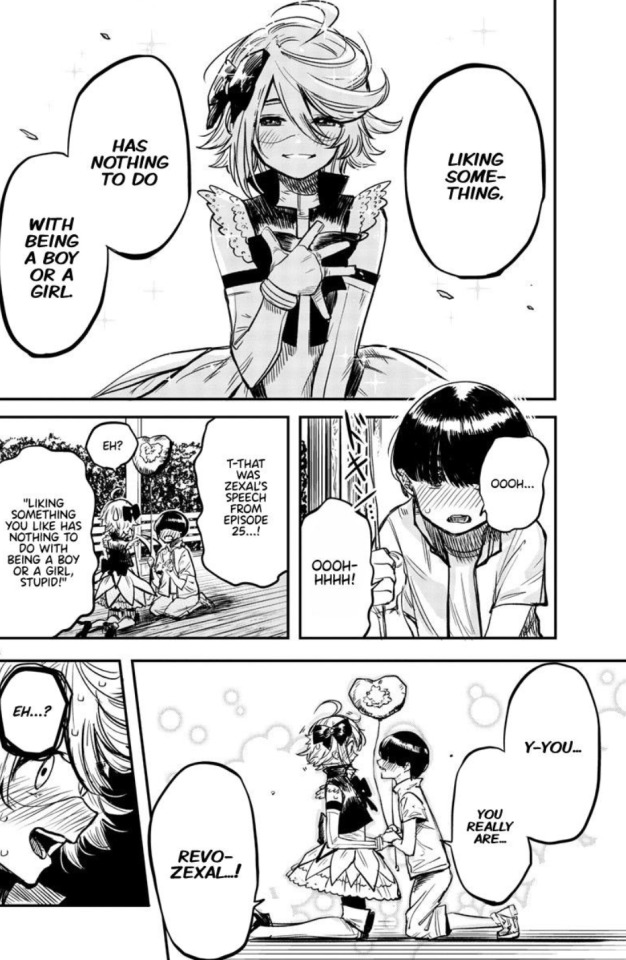
Now, for a bit of an interlude. As I expressed earlier, Shy's non "big name action hero" appearances have been far, far more enjoyable than her bigger pieces. It's a lot of fun getting to see Teru explore herself and in turn shine a light on different forms of expression and passion, with things like the calligraphy club. They're very simple moments, but their appeal is certainly understated when compared to big and flashy scenes.
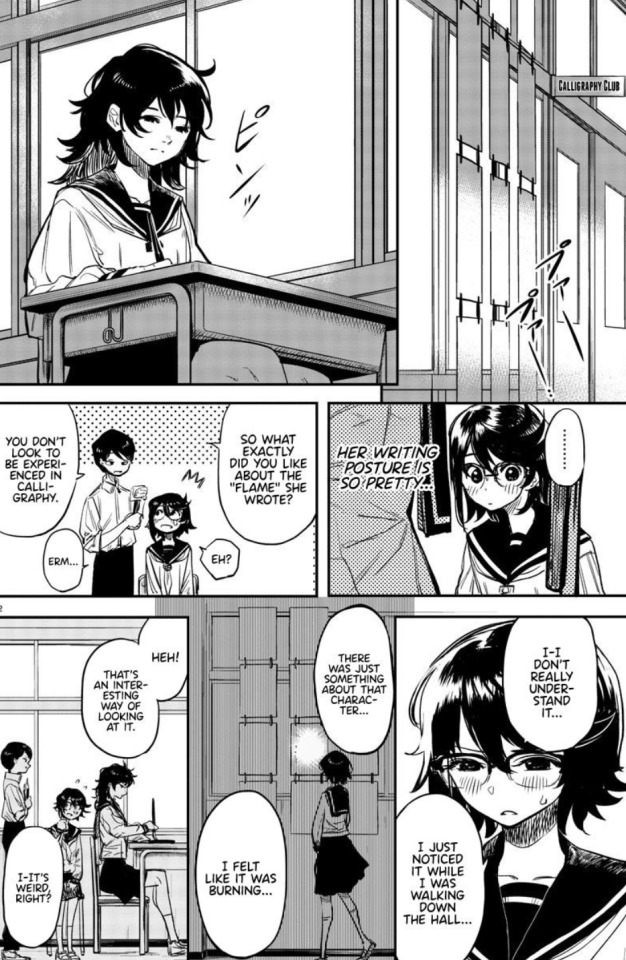
And now we make it the final "big" piece, the reveal. The ring was a sort of fake out for the "true" power of Stigma. We meet a girl with powers in opposition to Teru's, a rather clear setup for a rivalry/savior relationship of course, but they were still pretty enjoyable. This girl is a catalyst for understanding Stigma's underlying plan and approach, as we get to see even more characters and ideas. It basically goes as you'd expect, but we get some fun info from it.

Overall, I'd say this volume has more strengths than weaknesses. Regardless of that though, it draws attention to aspects that are worth being mildly concerned over in the context of a superhero story. Formulaic, reliant on tropes, and somewhat uninspired outside of variation. If you continue to be "aware" of the pitfalls of superhero media, they're nothing to really worry about, but otherwise I would think they'll get in the way rather quickly. Backstory, Battle, Betterment, repeat, there is very much a cycle that appears in the content of this second volume when compared to the first, but I'm hopeful that it will be dissipated now that they've exhausted the present options afforded. Only the next volume will tell. Well, either the next volume or the anime, whichever comes first.
#Shy manga#Bukimi Miki#superhero manga#Teru Momijiyama#Pepesha Andreanova#manga#manga review#manga recommendation#anime and manga
9 notes
·
View notes
Text
Shoegaze Classics - Split
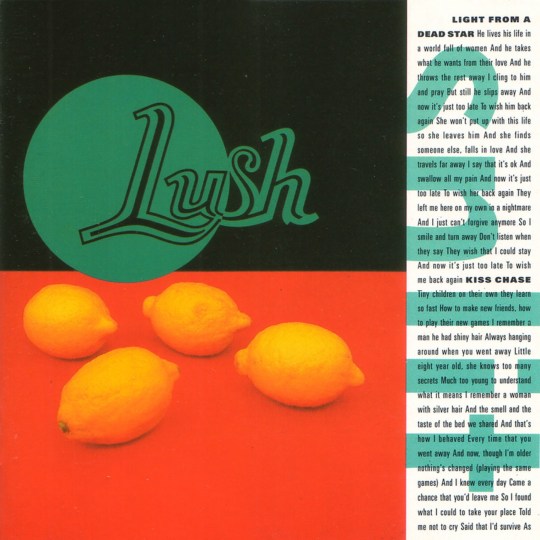
Split - Lush (1994)
Main Genres: Shoegaze, Indie Pop, Dream Pop
A decent sampling of: Britpop, Jangle Pop, Neo-Psychedelia, Power Pop
Hot damn, it's been a minute, no? I've emerged from my online slumber and decided that, in the days leading up to the much anticipated release of Slowdive's 5th LP Everything Is Alive, that now would be a great time to do a round up of reviews on some of the more noteworthy classic shoegaze albums and bands from the 90s, but first, a few introductory words:
I'll say it right now that the 90s is my favourite era in rock music. Even if I was hardly around for any of that decade, and certainly don't have any memories of it, I have spent my adolescent days and onward loving the guitar music of my parents youthful heyday (just not necessarily the bands that they were listening to, but there's some overlap here and there). Don't get me wrong, I'm not "lewronggeneration" and I very much love the music of today too, but there is a certain something about the sounds that dominated indie and alternative rock during that period that just resonates with me the most. Whereas nowadays, I'd argue that experimental electronic music, and probably hip hop, are both at their respective peaks. But if there was any time and place in music history that I would KILL (ahem) to have been around for in my late teens and early 20s, I would have been a young shoegazer living somewhere in the British Isles during the early 90s. Long bangs and even longer sleeves most definitely included. Shoegaze is my favourite subgenre of any kind of music, followed closely by its' cousin Dream Pop. The reverberated density, the myriad of different sonic colours, the air of introspection, the often androgynous blend of vocals, and the unaffected, ego-less, unpretentious, and without any bravado or machismo, complete fucking "coolness" of its sound. Everything about it checks all of my boxes for favourite things in music and just art in general.
It's also no secret that shoegaze was one of the more diverse scenes in rock music for its time. Shoegaze bands back in the 90s were just as likely to have a male and female vocalist simultaneously, or just a female vocalist, as they were to have just a man on the mic. It is also one of the only indie/alternative rock scenes from its time that I can think of, where multiple big names in the scene being celebrated were bands with black members (the bar was pretty low back then).
Indeed, it feels like just about anybody with the taste for it can be a shoegazer. Few genres of music feel so untied to gender, race, sexuality, and class backgrounds (Granted, being able to afford all of those guitar pedals means that you probably have to be pretty financially comfortable to form a shoegaze band). Bands were usually pretty friendly with each other too, developing the reputation of going to each others shows and sometimes playing in each others bands.
Altogether, shoegaze was and is distinctly 'humanist' in its sound and its ethos, its impressionistic wash of guitars and vocals smoothing out all the edges of the individual human condition to reveal the intangible, emotional core.
But enough gushing, dammit! It's time to hone in on some of the bands from that first glorious wave of wavey guitar bands.
The Band
I've decided to start with Lush, because I believe to the uninitiated that they make for the most accessible introduction to classic shoegaze. Where most shoegaze bands were either gloomy and midtempo, or noisy and incomprehensible, Lush maintained a fairly powerful, poppy, and hard-hitting shoegaze sound that was more reminiscent of 80s UK indie pop bands, rather than existing in direct responsive opposition to these bands like many other shoegaze acts of the 90s. Lush was co-led by the creative duo of Miki Berenyi, the outgoing lead vocalist and face of the band, with her definitive, innovative 90s fashion sensibilities and famously bright frigging red dyed hair, and Emma Anderson, the more introverted primary songwriter and backing vocalist, with both of them on guitars. It was rare then and rare now for the primary creative lead to not be the face of the band, but then Miki and Emma shared a lot of songwriting credits, and the two formed a very harmonious unit that was the foundation of the bands' equilibrium.
There were also two bassists; first Steve Rippon, then Phil King, as well as one of the more animated drummers of the shoegaze scene, Chris Acland.
In a scene already full of women in prominent roles, Lush still managed to stand out as the most overtly feminist shoegaze band, and likewise one of the most lyrically focused bands in a scene where vocal texture was most often paramount to lyrics. Miki and Emma would often write songs calling out male manipulators, and lamenting about failed romantic escapades with childish men, and Miki did not shy away from calling out sexism in the later 90s britpop scene. Lush started out early in the scene with a series of critically acclaimed EPs later compiled into the compliation LP Gala. This early period contains a lot of the bands best work, so definitely check it out. Then came Spooky, the debut cohesive full-length LP released on the legendary 4AD record label and produced by Cocteau Twins' own Robin Guthrie (the band that spawned a hundred dream pop and shoegaze bands). A very solid debut record that sounds incredibly 90s, and I hate to say it as someone who respects Guthrie's work, but the production on this is hit or miss. It sounds very compressed as far as shoegaze records go, which on some tracks actually creates a beautifully dense, 'solid' shoegaze effect like on "Superblast!", but then on others like "Nothing Natural" it sounds plainly smothered with little room to breathe. Sorta like poppy shoegaze music with acoustics from inside of a cola can.
Split was the sophomore record. Oddly enough, it was also the one to receive mixed reviews from the press at the time, even though to me and many others it is a clear step up from Spooky, but then by 1994 the british music press had already very much turned off of shoegaze after hailing it as the next big thing, because britpop was quickly usurping it as the next much, much bigger thing. Lush would then follow suit with Ride and several other shoegaze bands going in a more britpop direction on their last LP Lovelife as it became the next big thing in the mid-90s. But where some bands made that transition abruptly (and some might argue cynically), Lush's transition was a lot more organic, as the band had already been writing a lot of pop music with big riffs.
The Record
Split is kind of a transition record - it's about half full of really dense, head-on shoegaze with power riffs and half full of mellow, dreamy, bittersweet indie pop and proto-britpop, and nearly all of it is about the pains of young love. And in this case, I would say the record has the best of both worlds, and I would reiterate, makes a great introduction to shoegaze for the uninitiated, because it has a lot of soft pop songs to pad it out. The opener is truly (pardon the overused term) iconic. "Light From A Dead Star" fittingly begins as a twinkle in the sky, a dreamy, romantic fairytale turned sour, with strings and jangly guitars leading in to a cautionary tale about a man who devours women's hearts.
This is followed by "Kisschase", an upbeat yet wistful shoegaze ballad continuing the themes of love gone awry. Meanwhile, "Blackout" is a punchy and LOUD shoegaze rebel anthem, with glorious angelic harmonies between Miki and Emma forming the chorus like soaring streaks of light. "Desire Lines" is the opus of the record, and Lush's other finest moment after their early peak with "Sweetness and Light". It is a solemn, slow-tempo rainy ballad of echoing guitar strums and forlorn cello, culminating in a churning vortex of shoegaze guitars during the bridge that sound utterly gorgeous but bitterly exhausted. It is a song that encapsulates the feeling of being drained that is one of the many ways that depression can manifest. It is also an example of how, just because shoegaze may often emphasize texture over melody, this does not mean that there are not brilliant moments of songwriting in the scene, and Lush were the masters of their contemporaries when it came to good melodic chord-based songwriting. One more highlight I wanted to talk about is the beautifully poetic closer "When I Die", a gleaming, stripped down dream pop and jangle pop tune. Its lyrics reflect poignantly on the permanence of the memory of past lovers, but also makes peace with the idea in a way that I think is really quite lovely. I can imagine Miki singing this to herself while playing her guitar on a small boat, as it slowly drifts away from the shoreline and into the sunset painted horizon, leaving her past relationships behind. There's a couple of moments in the b-side where the record slogs a bit, but overall Split is honestly one of the biggest landmark albums of classic 90s shoegaze. A big part of its success is not leaning into shoegaze purism, opting for pop melodies, power chords, and lyrics that are very down to earth and specific in theme. At times, it almost feels like The Smiths doing a shoegaze record, and I'm not even a big fan of The Smiths, but I genuinely love this album. Kudos to Lush.
What Came After That?
Like many original shoegaze bands, Lush did not survive the turn of the century. Though Lush's story is particularly bleak, as the band went into dissolution when drummer Chris Acland very tragically became a victim of suicide. Unfortunately, Chris' story is all too common as most young men still largely struggle to talk to their friends about depression and anxiety to this day, even the guys in more accepting and progressive social circles.
In the aftermath, Emma went on to form her own small indie band called Sing-Sing, and they put out a few records in the noughties. Honestly, I've yet to check out any of their material.
The band reformed briefly in 2015 and 2016 to release an EP, and then Miki moved on to her own new dream pop band known as Piroshka. Again, have not really properly checked it out. Just very recently, Miki Berenyi put out a memoir recently about her time in Lush and her experiences as a woman in a 90s rock scene. My excitement for this book release was a bit stifled however, as there have been rumours that Miki, like many other gen X British feminists before her, went down the mumsnet TERF rabbit hole after some younger fans noticed that she followed some less than savoury figures on twitter calling themselves gender critical. Apparently there were a few liked posts as well that were TERFy, but this one could be hearsay as I could not find anything like that after doing a quick check myself. For what its worth, she also follows a few very explicitly pro-trans accounts, so her status on transgender rights seems ambiguous. Its a shame if true, because I feel shoegaze and dream pop really lent themselves to gender freedom and pro-queer sentiments what with the lack of machismo and definite embrace of androgyny as a collective sound. Ahh the wondrous horrors of the social media age, allowing us to creep our beloved icons and learn every worst detail about them that reminds us that no one is perfect, though some are definitely worse than others. Regardless, I haven't really let that ruin the music for me. I know this is an issue people feel intensely strong about, but I have generally taken a very "vibes" based approach to art vs. the artist. Nothing in Lush's music reflects any sentiments that are deplorable, and Miki has not made any official appearances at TERF events or come out as an active anti-trans activist, so I will continue to enjoy Lush with peace of mind. Kind of an awkward spot to end things, but that's pretty much all the thoughts I have to share. I hope you enjoyed this first entry, and please do stay tuned for more ramblings about classic shoegaze bands like Ride, MBV, and Drop Nineteens. Peace out. Oh yeah, and here's the stats. 9/10 Highlights: "Desire Lines", "When I Die", "Light From A Dead Star", "Kiss Chase", "Blackout", "Undertow", "Lovelife"
#album review#music review#list#shoegaze#shoegaze classics#1994#dream pop#indie pop#miki berenyi#emma anderson#90s#indie rock
3 notes
·
View notes
Text
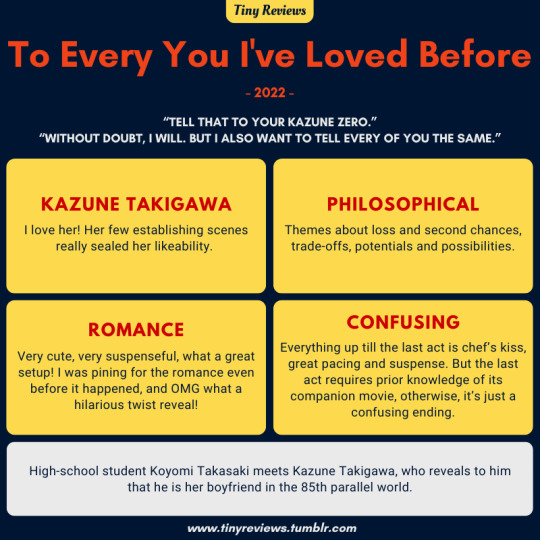
I wonder what the wild dog reference was about. It seemed Kazune did not make that bit up?
Even though this is the superior story of the two, I recommend first watching the companion movie, To Me, the One Who Loved You, to fully understand the whole story.
To Every You I've Loved Before is a 2022 Japanese animated film based on the novel of the same name by Yomoji Otono. It stars Hio Miyazawa, Ai Hashimoto, Aju Makita, Mutsumi Tamura, Kenji Hamada, Mie Sonozaki, Tomomichi Nishimura, Fumi Hirano, Miki Mizuno, Kimiko Yo, and Tokuma Nishioka.
#to every you i've loved before#kazune takigawa#koyomi taksaki#parallel shift#philosophical#romance#anime#anime movie#anime review#movie review#hio miyazawa#ai hashimoto#aju makita#mutsumi tamura#kenji hamada#mie sonozaki#tomoichi nishimura#fumi hirano#miki mizuno#kimiko yo#tokuma nishioka#2022
5 notes
·
View notes
Text
Zenra Meshi ( Naked Dinner ) Review on Ep 1-2
I've been quite a watcher of Japanese BL shows, especially since I'm intrigued by their language ( also an anime fan ), their soft yet appealing storylines and charming acting. Eventhough the stories don't dig deep much for their less number of episodes, I still find them quite interesting.
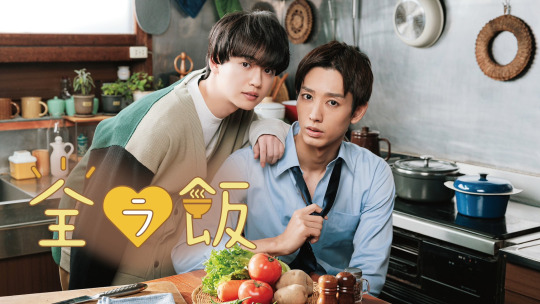
This time, I've started watching Naked Dinner, especially because of Goto Yutaro, who has also played in The Man who Defies the World of BL, and Cherry Magic. But, overall, I was excited due to the plot and their first encounter snippet from the official trailer.
Below, I've addressed the things I've liked and disliked about the show so far.
LIKES
1. Cinematography
So, when I watched the first episode, that one thing that significantly caught my eye was the cinematography of this show. Needless to say, you'd realize that it's beautiful and relaxing aesthetically, and the setting of the show is artistic. Starting from the scenarios of the old town of grandma's house, to the wonderful visual feast of the cooking of various recipes; it was oddly satisfying to watch, as if I've been travelling and eating like Ichijou, vicariously ( not by being naked, not thAt tho )
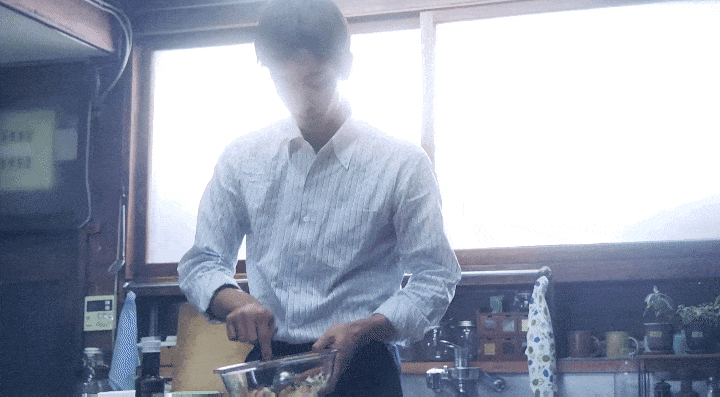
The soft tone of the show is truly appealing - I'd recommend this show if you're up for a full visual sensationalism, and that's it. From the food, grocery stores, to the office and the furnishings at home - I adored the way the cinematic effects were added here, portraying the Japanese or Global cuisine, topped with Japanese culture. The house at grandma's is like nostalgia, which brings out a poignant warmth in the show, as well.
2. Familial Bond
I really adored how the relationship of Ichijou and his grandma was being portrayed. From what I've seen so far - the invisible thread that is connecting all the plot holes, is Ichijou's grandma. Eventhough she has passed away, her role is the most prominent one in the entire show, atleast till these 2 episodes. It was a creative shot to bring back memories of Ichijou's childhood, when he opened the boxes of his kid days, and saw so many stuff. It felt sweet and it hit home, reminding me of my childhood toys, books and other things.

The character of Mahiro is okay-ish, eventhough I felt awkward and was freaking out about what was he doing in Ichijou's grandma's house. Slowly, the show cleared up that Mahiro is the grocery guy and the one who taught his grandma different international recipes, so she can travel through tasting, similar to the promise she made with Ichijou. However, I still find it quite suspicious about their development in the show, but again maybe it will get better as the show proceeds.
DISLIKES
1. The Chemistry
The acting of the male leads is pretty decent, I agree. However, when it comes to the chemistry between those two, I find something's off. I don't know what it is, or how it is but I kind of find that they might be a little too stiff with one another. Okay, not that but eventhough we have just started on the show - the rapport between the leads are not in synchronicity. However, let's hope that this will improve more as the show progresses, because there's 12 episodes in total - so plenty of room to cover up with elegance.

So, eventhough there's a few flaws already coming up, I'm curious about what these actors would surprise us with next, especially with such a plotline. Eventhough I'm not very impressed initially, I'd try to watch the entire thing, unless it gets worse for any reason. But, I hope the story and their chemistry would take a nice turn, because the plot and the cinematography has a lot of potential.
#zenra meshi#naked dinner#Ichijou fouta#miki mahiro#goto yutaro#bl dramas#bl actors#Japanese bl#kondou shouri#bl review#zenra meshi review#bl romance
5 notes
·
View notes
Text
A Terrified Teacher At Ghoul School Episode 2 Review - Physical Exam Madness
Oh, I like this episode a lot more than the first one! It flowed so much better and the gags are a lot funnier! The entire first half mainly revolved around the students’ physical exams and how excruciating youkais can be when needed to be examined. The second half revolved around the aftermath of the physical exams and how Haruaki has to be punished for breaking the principal’s windows. It’s nice seeing Haruaki spending time with his fellow teachers and his students as well!

The episode introduces several new adult characters. We have fellow teachers Miki and Hatanaka. Miki is an ogre youkai and Hatanaka is a Kamaitachi, or a scythe weasel youkai. Miki is very chill while Hatanaka is very stern; he’s the one hounding Haruaki to do various tasks during the physical examinations like helping Nyuudou with his eye examination which consists of him having to call someone in Tokyo because of how far Nyuudou can see. Another one of his tasks is to gather Tamao and Maizuka as animal youkai need to have special injections conducted by Takahashi, a doctor specializing in youkai treatment. I’m not sure if he is a youkai himself, he probably is as this is a youkai island. Anyways, Takahashi is a freak and I love how he just has a giant syringe in tow. What the heck. Also, poor Nezumi and Hatanaka; they’re teachers but also had to get injections in their animal forms alongside Tamao and Maizuka. The last of the major tasks is to measure Oota, who is a Daidarabocchi, which is some kind of titan youkai. However, climbing Oota is a task in itself. This doesn’t make sense because why can’t he just ask Oota to lift him up? Then again, Sano was also climbing him, so I guess that’s normal for him? Anyways, the fact that climbing Oota is a feat in itself and that he’s 130 meters tall. Still, it makes no sense that Haruaki had to climb Oota when the second half revealed that he knows how to be human-sized. What the heck? Regardless, it was still funny with how Sano caught him by the ahoge and both Sano and Haruaki were blown away by Oota’s sneezing, which then caused them to crash into the principal’s office which then transitions to the second half of the episode. Like I said, this was a nice episode to help get to know the other teachers and more of the students.







The second half was hilarious too! As punishment for breaking the window, Haruaki and several of his students are sent to clean the school pool which has been abandoned for a while. The students didn’t even know they had a school pool. It makes sense because it’s filled with miasma-like substance. I wonder what’s in that water because when Hijita fell in, he got yassified the heck to the point of being unrecognizable. Miasma? More like Mi-yass-ma. Apparently, the pool is home to Kappa and a human faced fish Youkai. The kappas tried to kidnap Maizuka, which got him scared because he didn’t want to be yassified like Hijita, which then causes Sano to rescue him. This was the scariest Sano has been; he likes Maizuka’s small size. I do wonder what would happen if Maizuka ever became taller. Would he become devastated? The human-faced fish caught me by surprise because I didn’t expect that blob face on it at all. Fortunately, Oota was able to catch him. It turns out that the fish youkai is very weak-willed, as Haruaki pointed out. Unfortunately, Oota was standing in the miasma water, and it burned him, which caused him to fall backwards and destroy the area. Poor Haruaki, this caused his pay to get docked. Don’t worry, Hijita makes it out alive. I think the gags were a lot more hilarious in this episode because it’s not Haruaki being miserable this time; it’s the students being the the comedy this time.





The voice cast for the new characters are pretty interesting. Miki is voiced by Shun Horie. I usually associate him with young boys since his roles mainly consist of them like Aether from Genshin Impact and Amethio from Pokemon Horizons. It’s interesting to hear him do a Kansai accent. Hatanaka is voiced by Ryota Iwasaki, who voiced Hayato from The Yuzuki Family’s Four Sons who’s also a teacher, except that Hatanaka is a lot more stern. What surprised me the most was Takahashi being voiced by Shouta Aoi. I always associate him with cute roles as he’s usually typecasted into those roles, so for him to voice an adult and a rather sadistic one caught me off guard. He should voice more adults because the range is crazy. This was the guy who voiced Kumatte-chan from My New Boss Is Goofy. For the students, Tamao is voiced by Yuki Sakakibara, whom I’m not too familiar with but I did watch Ayaka which he was a supporting cast in. Nyuudou is voiced by Akira Takano, a new face. Oota is voiced by Reiji Kawashima, who you might know as Fushi from To Your Eternity. I also hear Sugita as one of the students and the kappa. It’s always super interesting to see who’s in the cast. The cast is mixed with veterans and new faces.

Because I liked this episode so much, I can’t wait to see what sort of antics Haruaki and his students will deal with. What I like about this anime so far is that the story isn’t just limited to Haruaki and his class, but it also involves the faculty too. It’s nice to see more adult characters and it’s nice to learn more about some of the newly introduced characters. Hopefully, Haruaki will be reunited with his lost school uniform catalogue. What are your thoughts on this episode?

#a terrified teacher at ghoul school#youkai gakkou no sensei hajimemashita#Haruaki abe#Mikoto sano#mamekichi maizuka#Rensuke nyuudou#Tamao akisame#Yagorou oota#Rintaro miki#Izuna hatanaka#Akira takahashi#nezumi-sensei#review#anime#anime review#ecargmura#arum journal
11 notes
·
View notes
Note
Isono plz!
So remember when I said Wada and Tamba were the only ones left?
Turns out I can't count because I forgot about Isono.
Either way under the cut we go~
Due to the short lifespan of Isono we don't get a lot of information on her. We know she is a streamer, possibly a Vtuber, and that Wada was one of her fans. She also seemed to be a gaming streamer given the content of her videos. But then again when you stream you are a gamer.
Expect for Bubbles because he's planning to do streams where he just talks science and writing, but he also does gaming streams as well. But that's neither here nor there.
She also seems to be one of the more "popular" people in universe and makes you question how a popular streamer can just vanish. Well if we assume this is all a secret goverment job, some cancelling incident was probably put in place or she just dropped off, plain and simple. It happens to influencers.
The confession game reveals she sent her older sister into hospital but this is a case where context means everything but unfortunately given what happens to her, we will never find out, though I do have my theories and guesses on what it is.
What makes Isono's demise even more tragic was it was completely avoidable. I don't mean the fact she could have waited to go in the kitchen and avoided Sasaki, but the fact is she won the quiz game and as such was granted immunity, but she decided to give said immunity to Wada because after she and Tsuno found out that Wada has basically nobody in his life, decided to give him a little pick me up and like Tsuno, Isono decided to be a big sister figure to Wada.
Heck she was gonna microwave something for Wada but Sasaki was in the kitchen and even though they were talking causually, she just snapped and killed her right then and there, and let me tell you something....
There is a reason why Tetro Pink is in audio form, because it means the creators can get really graphic with descriptions in ways they cannot do in visual form and your mind will always think of something even worse then it actually is. I mean...I saw the fan made BDA of Isono and it was gruesome don't get me wrong...but my mental image had bits of her brain scattered everywhere. And before you ask, no I'm not okay.
And its surprising that Wada wasn't blaming himself as much as I thought he would but maybe he kept a lot of that internally. Either way he has the final audio recording of Isono to remember her by.
So yeah if Sasaki was important character who got killed early, Isono was the character who got killed because they didn't want two good influences on Wada and he needs to suffer.
And it will not stop.
#review anon talks#danganronpa#dr#tetro danganronpa pink#tetro danganronpa spoilers#isono miki#and with her done#now i can say its only tamba and wada left#how did i forget her#is it the price of her being chapter 1 victim#maybe#either way like comment and subscribe#wait this is tumblr not youtube#it doesn't work like that#errr like reblog and follow?#sounds corny to me
0 notes